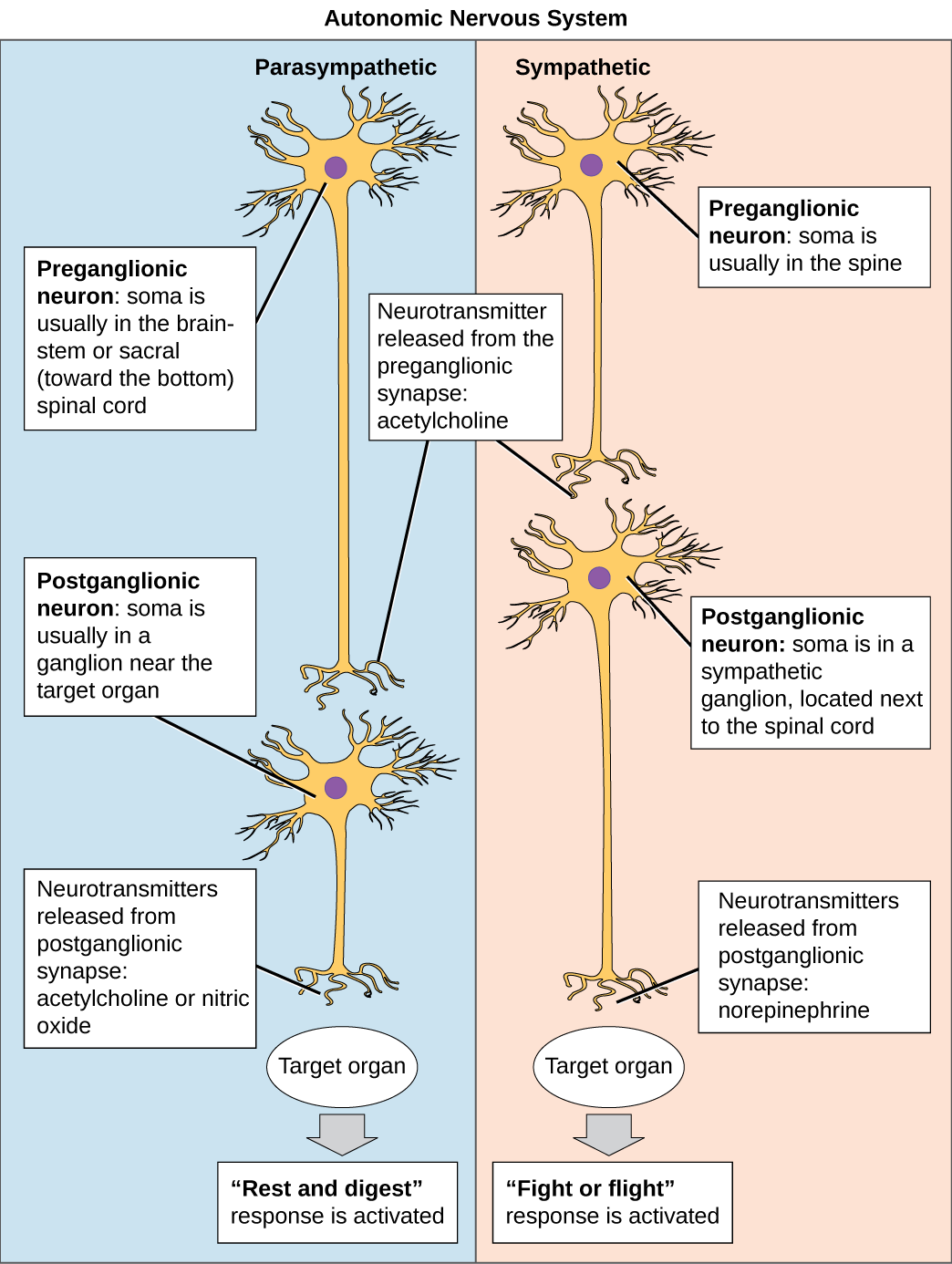SNS Spinal Nerves
Organization of the Central Nervous System
- Gray Matter: Composed of neuronal cell bodies.
- White Matter: Consists of bundles of axons.
Each spinal nerve contains both sensory and motor fibers.
Formation and Composition of a Typical Spinal Nerve
Rootlets and Roots:
- Dorsal (Posterior) Rootlets: Arise from the spinal cord and converge to form the dorsal root. Contains axons of sensory neurons located in the dorsal root ganglion (DRG).
- Ventral (Anterior) Rootlets: Arise from the spinal cord and converge to form the ventral root. Contains axons of motor neurons from the anterior/ventral horn of the spinal cord.
Formation of the Spinal Nerve:
- The dorsal and ventral roots unite at the intervertebral foramen to form a spinal nerve.
- The spinal nerve quickly bifurcates into the posterior ramus (supplying deep back muscles and skin) and the anterior ramus (supplying the anterior and lateral parts of the body and limbs).
Dermatomes
A dermatome is an area of skin supplied by the sensory fibers of a single spinal nerve. Dermatomes are useful in diagnosing the level of spinal cord or nerve root injury.
Distribution:
- Back Skin: Supplied by cutaneous branches of dorsal primary rami.
- Anterior and Lateral Body Skin: Supplied by cutaneous branches of ventral primary rami.
- Example: The skin overlying the nipples is supplied by the T4 dermatome.
Neurons Related to Spinal Nerves
Sensory Neurons: Cell bodies located in the DRG, carrying sensory information towards the CNS (afferent fibers).
Motor Neurons: Cell bodies located in the ventral horn of the spinal cord, sending motor commands away from the CNS to target tissues (efferent fibers).
Terminology
- Afferent: Sensory fibers bring information to the CNS.
- Efferent: Motor fibers traveling away from the CNS towards target tissues.
Sympathetic Nervous System (SNS)
The SNS, often called the "fight or flight" system, prepares the body to respond to perceived threats by mobilizing energy resources and increasing alertness. It originates from the thoracolumbar region (T1-L2) of the spinal cord.
Anatomy and Pathways:
- Preganglionic Neurons: These neurons have cell bodies located in the lateral horn of the spinal cord segments T1 to L2. Their axons exit the spinal cord through the ventral roots, travel a short distance, and synapse in the sympathetic chain ganglia.
- Sympathetic Chain Ganglia: These are a series of ganglia located alongside the vertebral column. The preganglionic fibers may synapse at the same level, ascend, or descend to other levels before synapsing.
- Postganglionic Neurons: The axons of these neurons extend from the ganglia to various target organs. Long fibers release norepinephrine (except for sweat glands, which use acetylcholine).

Functions:
- Cardiovascular Effects: Increases heart rate and contractility and constricts blood vessels to raise blood pressure.
- Respiratory Effects: Dilates bronchioles to enhance airflow.
- Metabolic Effects: Stimulates glycogenolysis and lipolysis to provide energy.
- Other Effects: Inhibits gastrointestinal activity, dilates pupils, and stimulates sweat glands.
Parasympathetic Nervous System (PNS)
The PNS, often referred to as the "rest and digest" system, promotes energy conservation and restores the body to a state of calm. It originates from the craniosacral regions, specifically the brainstem (cranial nerves III, VII, IX, and X) and the sacral spinal cord (S2-S4).
Anatomy and Pathways:
- Preganglionic Neurons: These neurons have cell bodies in the brainstem and the sacral spinal cord. Their axons are long and synapse in ganglia close to or within the target organs.
- Postganglionic Neurons: These neurons have short axons that extend to the target organs and release acetylcholine.

Functions:
- Cardiovascular Effects: Decreases heart rate and promotes vasodilation in certain regions.
- Respiratory Effects: Constricts bronchioles to decrease airflow when oxygen demand is low.
- Metabolic Effects: Stimulates digestive activities, including salivation, enzyme secretion, and peristalsis.
- Other Effects: Constricts pupils and stimulates urinary bladder contraction.
Neurotransmitters:
- SNS: Uses norepinephrine (and acetylcholine for sweat glands).
- PNS: Uses acetylcholine for both preganglionic and postganglionic synapses
Here's a fun AI song of the core material:-